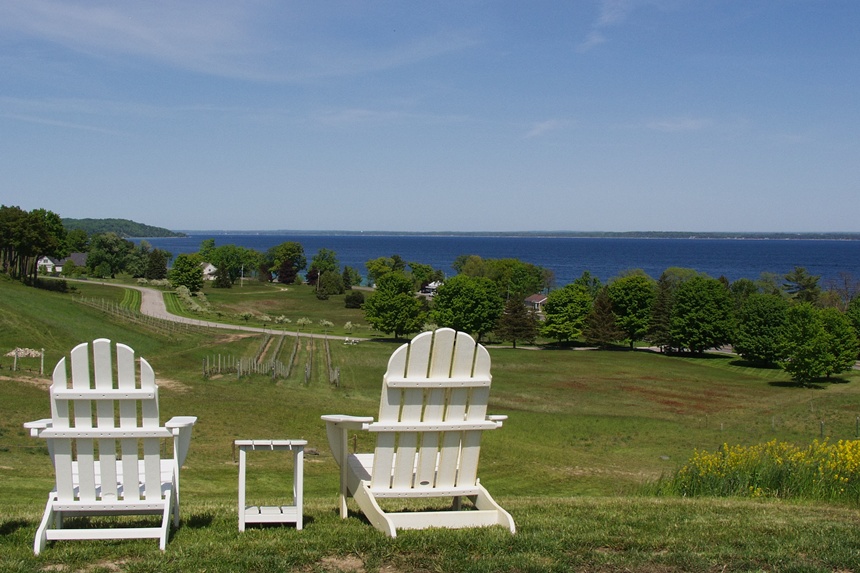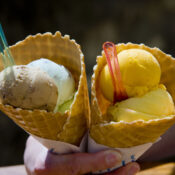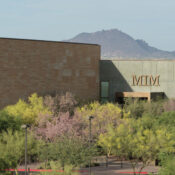Mention U.S. Wine Trails, and immediately visions of California’s rolling Napa Valley, New York’s dramatic Finger Lakes, or Oregon’s mountain-framed Willamette Valley come to mind.
But as wine growing technology — and America’s appetite for good home-grown wine — explodes, first-rate wine trails have sprung up all over the nation.
Here’s my first article in a continuing series on America’s Most Unexpected Wine Trails.
Idaho: The Lewis-Clark Valley Trail
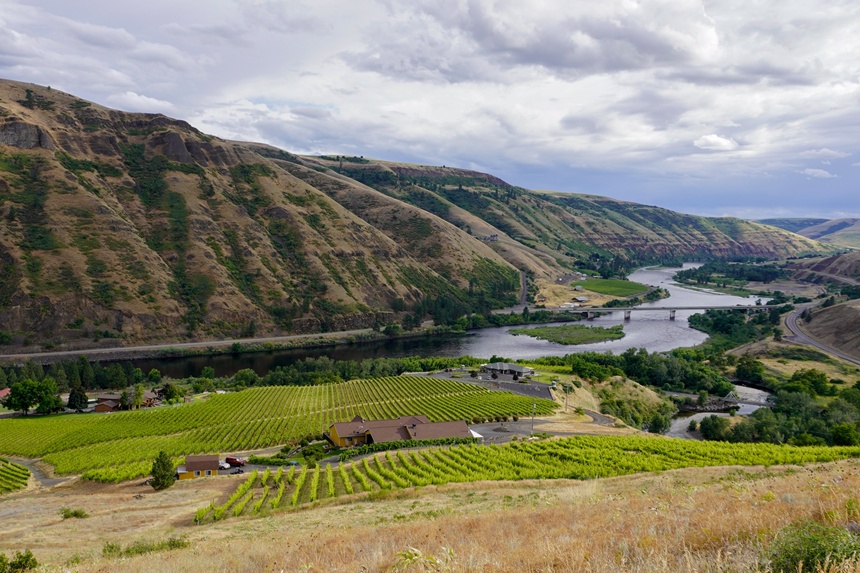
The narrow blue river winds through a steep green valley, far below the tasting room where I am settling in with a fine cabernet sauvignon. At my feet, rows of grape vines plunge toward the water in tight succession, then continue their march up the hill on the opposite bank.
A whisper of wind rustles through the vineyard, accompanying the chirps of chickadees and the soft gurgle of the waters below.
I have experienced a setting almost identical to this one before, sampling the wines of a family vineyard along Germany’s Moselle River. But I am not in Europe, nor California.
I am in Idaho. Yep, the same state whose license plates herald its “Famous Potatoes” is, almost secretly, an emerging destination for travelers seeking the romance of America’s wine country.
That’s because the picturesque Rivaura Estate and Winery, perched in the low-lying mountains east of Lewiston, is no one-off: It’s just one of dozens of similarly picturesque, equally acclaimed wineries stretching along a scenic drive that reaches halfway across the state.
A glance at a map explains why Idaho yields wonderful wines: The Lewis-Clark Valley, which embraces Idaho’s best wine region, continues west across the state border into Washington State’s fabled wine country. The very same Snake River water, the very same sun inclination, the very same Pacific Ocean weather patterns that nurture Washington State’s famous wines also bless this little corner of Idaho.
“The only difference,” a winery owner tells me, “is that 50 years ago someone decided Idaho would be known as The Potato State.”
More than a century ago, Coco Umiker’s family bought a spread of land in western Idaho and grew wheat on it. In 2004, she and her husband Karl, a chemist, planted Clearwater Canyon Cellars’ original vines on that property — the first commercial vineyard in the Idaho portion of their valley.
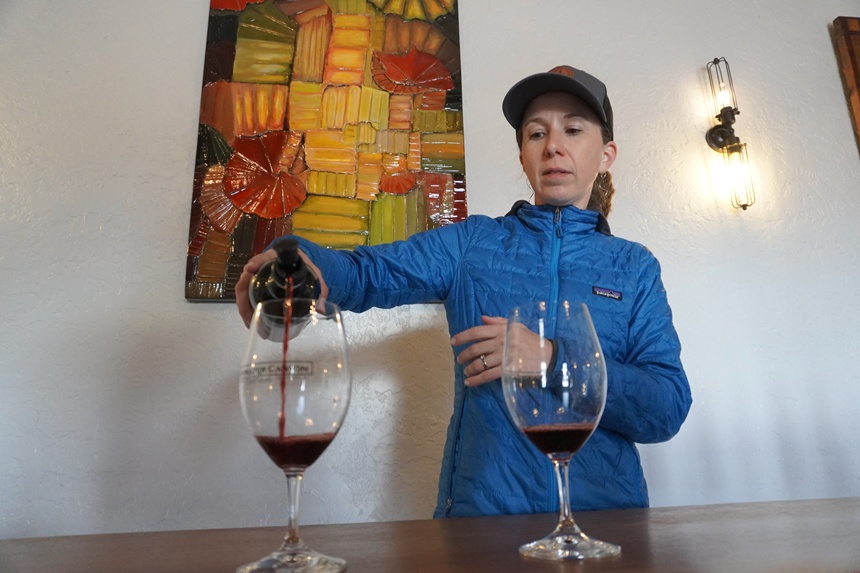
“In the third year we had a little crop,” she recalls. “We made a barrel of wine.”
Since then, the Umikers have been able to boost their production thanks to grapes from nearby growers, but they are scrupulous about using only fruit from their valley.
It’s important. If you ask why it’s important, Umiker will regale you with everything you need to know about drainage and altitude and sediments left in an ancient lake bed.
Like many wine makers, Umiker has an extensive background in biochemistry, plus a doctorate in viticulture. But right now, in the wine tasting room, Coco Umiker is mostly a proud winemaker, pouring a rosé made of all-Idaho grapes and clearly hoping I’ll like it. I do.
“This one is only available through our wine club,” she says. Then she laughs. “A wine club, can you believe it? It seems like yesterday we were out there begging people, ‘Try our wine! Try it! For God’s sake, try it!’”
Through a window, we can see an SUV full of customers disembarking.
“This is better,” she says.
Old Mission and Leelanau Peninsula Wine Trails, Michigan
Driving along this finger of land north of Traverse City, Michigan, I can’t help but notice fields of uprooted trees.
“Cherry trees,” says my companion, a longtime local. “We’ll be seeing grape vines here next year.”
That’s a rather radical statement when you consider Traverse City has long called itself the Cherry Capital of the World (when I arrived here, I came through Cherry Capital Airport). There are lots of apple orchards around here, for sure, but grapes?
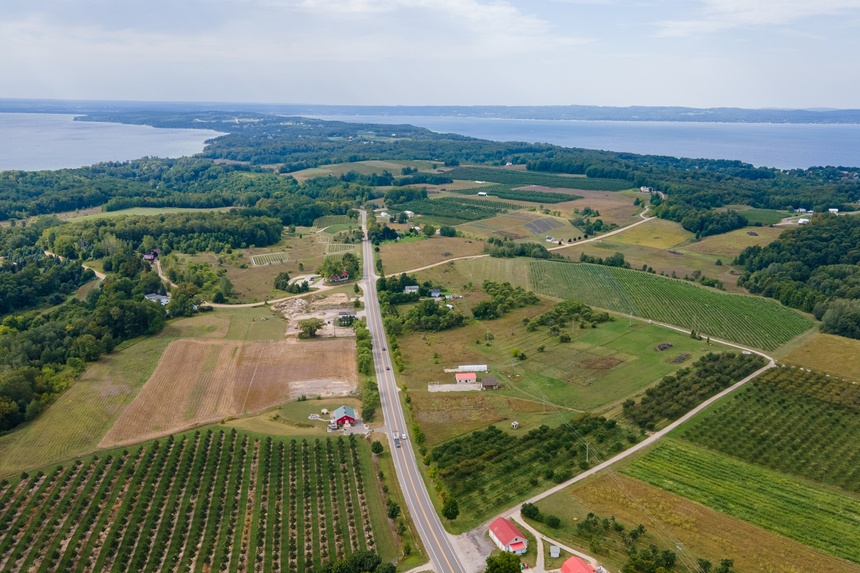
For decades, die-hard vintners elsewhere across the upper Midwest struggled to find grapes hearty enough to survive the area’s frigid winters and quick-ripening enough to produce juice during the notoriously short growth seasons. But about 50 years ago, one local farmer took note of Traverse City’s location, nestled between two long, narrow peninsulas that jut far into the waters of Lake Michigan. The lake’s deep waters moderate the temperature of the sandy hillsides year-round, and especially in the spring and fall, extending the growing season.
Today, more than 40 wineries dot the peninsulas, along with charming inns and bed and breakfasts.
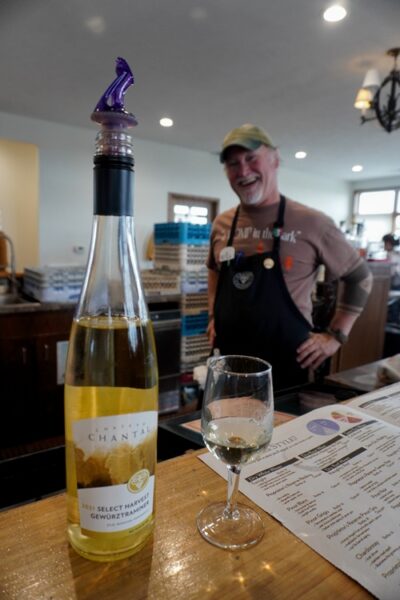
At 45 North Vineyard and Winery, wine maker Jay Briggs points out a sign standing above the vineyard — marking the exact spot where the 45th parallel passes through the property.
“You follow that line that way,” he says, with a touch of awe in his voice, “and you run through Rhone and Bordeaux regions of France. Go the other way and you come to the Willamette Valley in Oregon.
“Being on the 45th parallel isn’t everything in making good wine; but it’s not nothing.”
Upper Midwesterners are a rugged lot, of course, but even in this often-harsh climate you’ll still find some echoes of the balmier wine countries. Chateau Chantal, with architecture that echoes a French chateau, offers wine tastings from a large-windowed room overlooking the vineyards and the bay beyond. Brys Estate Vineyard and Winery has a handsome old-school tasting room with leather chairs and couches, plus an elevated outdoor deck that juts out over the sloping vineyard itself.
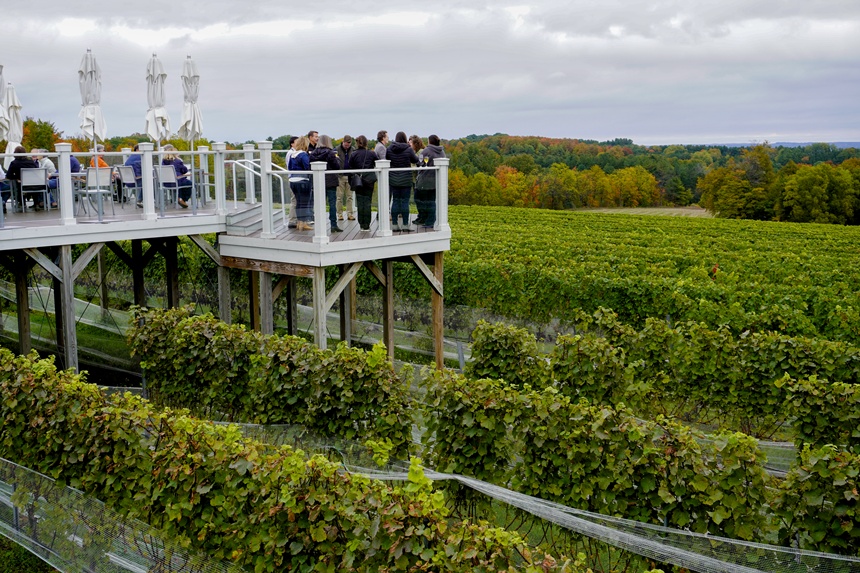
And then there’s Mari Vineyards, with a re-created Umbrian castle on a hill overlooking Grand Traverse Bay. At a long table in a tasting room, I am sipping a fine glass of Estate 2021 Bel Tramonto and chatting with owner Marty Lagina — onetime owner of a petroleum company, current owner of a Michigan’s largest producer of sustainable energy — and, along with his brother Rick, costar of the reality series The Curse of Oak Island.
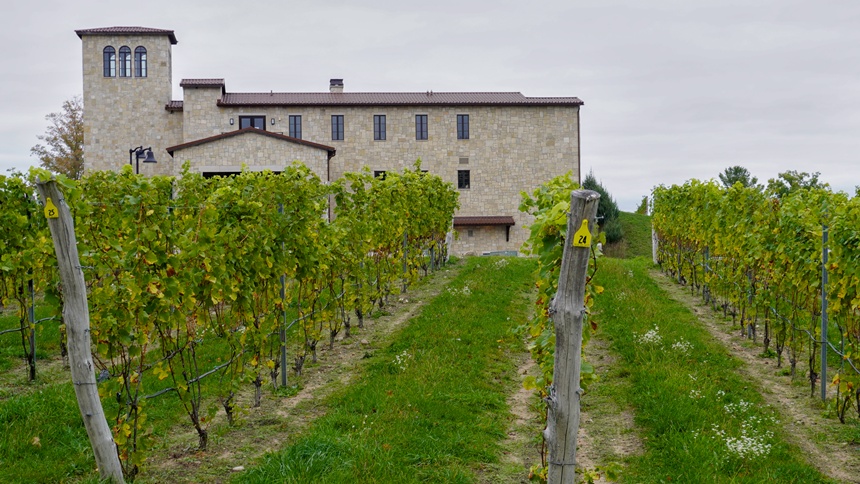
Lagina planted his first row of grapes in 1999 and named the new vineyard/winery after his mother, an Italian immigrant.
“That poor woman,” he says. “She came here from the green heart of Italy, and landed on Iron Mountain in the Upper Peninsula. She must have thought, ‘My God, what have I done?’”
Lagina’s grandmother always made wine — even during Prohibition. She is the inspiration for Mari Vineyards, where Lagina stubbornly — and largely successfully — blankets his hillsides with Old World grapes that few thought could survive up here. Thanks to some cleverly designed, hoop-supported greenhouses, Lagina has extended his growing season long enough to support nebbiolo and sangiovese grapes along with the more standard cabernet franc, merlot and riesling.
But to this day, his most popular wine is one of is first, known simply as “Row 7.” Helping Lagina plant his first vineyard during a hectic weekend in 1999, a group of friends accidentally mixed together a random collection of unlabeled grapes, which grew into a jumble of mismatched varietals.
Unwilling to plow up the row — Row 7 — Lagina simply let the vines ripen and began to make wine from that unruly collection.
And, surprise, people love it.
“I still don’t know what combination of grapes we’ve got up there,” he says. “And I’ve forbidden anyone to try and figure it out!”
The Hill Country Wine Road, West Texas
Driving out along Route 290 east of Fredericksburg, Texas, you’d expect to find some cattle ranches and a whole lot of weathered grassland. What you might not expect are more than 50 wineries and scores of inns and B&Bs flanking the highway.
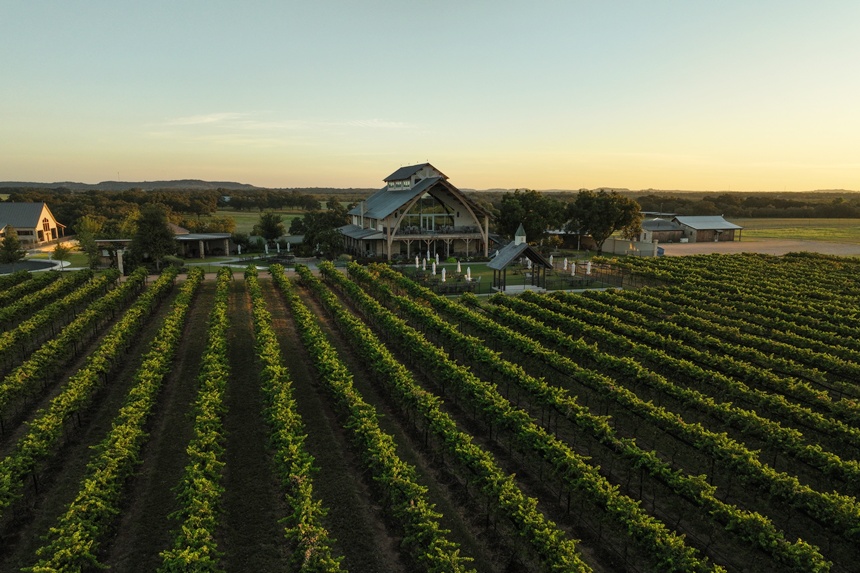
It’s a cool afternoon in early December, one of those rare times of year when the Texas Hill Country sun does not threaten to make your skin peel like a rattlesnake’s. Even now, the wide shade of the live oak and pecan trees is welcome — and so is the crystalline wine I’m holding in a stemmed glass, one of the best tempranillos I’ve ever enjoyed.
This is Signor Vineyards, a relatively new winery run by a family that has farmed and ranched this land for six generations. Signor is a major player in a wine district that is both surprising and, in some ways, inevitable.
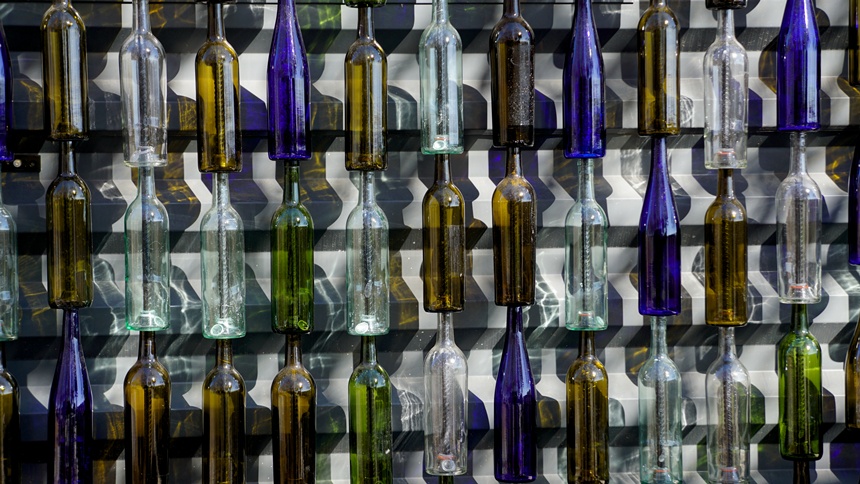
A couple of centuries ago, Fredericksburg’s German settlers got right to work making wine from the mustang grapes they found growing in the area. Today, their descendants nurture dozens of varietals, making the most of the region’s challengingly dry and hot climate.
To be sure, Texas’s wineries have to focus on grapes that thrive in hot weather, including petite sirah, but the local champ is undeniably tempranillo, a Spanish grape that, when it comes to grape-killing heat, has a thick skin, and I mean that in a good way.
A drive through Central Texas’s wine corridor offers sumptuous spreads like Signor Vineyards to veritable wine malls, such as the Texas Wine Collective, where several local wineries share a visitors facility, and Texas Heritage Vineyard, an outdoorsy spot that has frequent live Texas music. The more adventurous wine seekers may even chance a visit to the numerous, decidedly modest wineries along the road — some working out of little more than a double-wide trailer.
Fredericksburg is itself a charming slice of Bavaria grafted into the heart of Texas, with quaint hotels and inns. And tree-shaded inns seem to be everywhere (including around nearby Luckenbach, where Willie Nelson holds an annual picnic). A seasonal “Winery Pass” gets you samples at multiple establishments — and private bus service safely shuttles you between tasting rooms.
Lodi, California
For nearly a century, the vast vineyards of Lodi were the wine world’s best-kept secret: The town and its surrounding vineyards provided tons of grapes every year to supply the demands of larger, world-famous wineries, including some in prestigious Napa, a few valleys away.
Then, in recent decades, the growers of Lodi began to take their wine seriously.
“The folks here started to say, ‘Why don’t we have our own wineries?’” a Lodi winemaker told me. Now the Lodi area is home to dozens of boutique wineries, making it an economical — yet undeniably competitive — alternative to nearby Napa.
Example: While a wine tasting at a major Napa winery will set you back $75 to $125 a person, at Lodi’s picturesque (and award-winning) Oak Farm Vineyards, you can sample five wines for $20. Sit outside by the vineyard or enjoy the winery’s wood-and-stone tasting room, listening to excited wine lovers’ chatter echo from the high timbered ceiling.
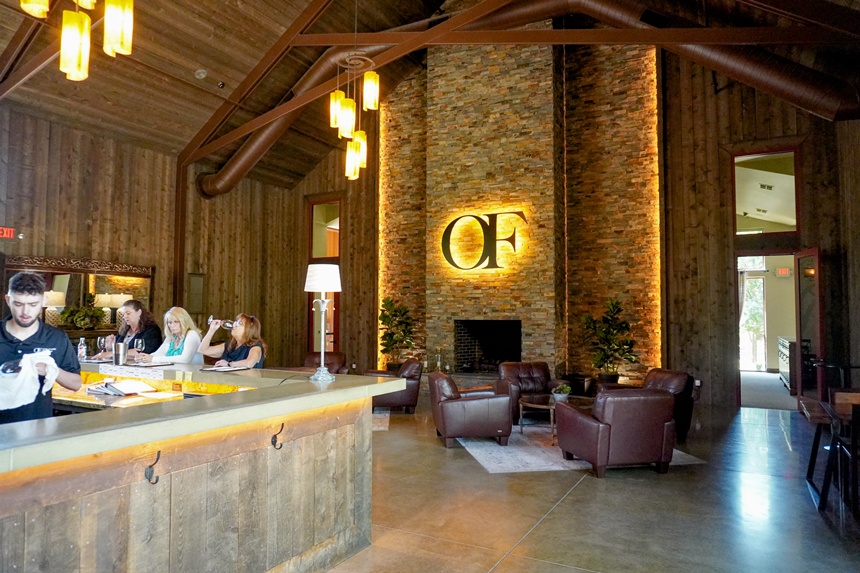
For sunset sipping, you can’t beat Bokisch Vineyards, right in Lodi, where the sky turns red above a gently rising hill of grapevines — and you can raise a toast to yourself, in honor of finding this spot before everyone else did.
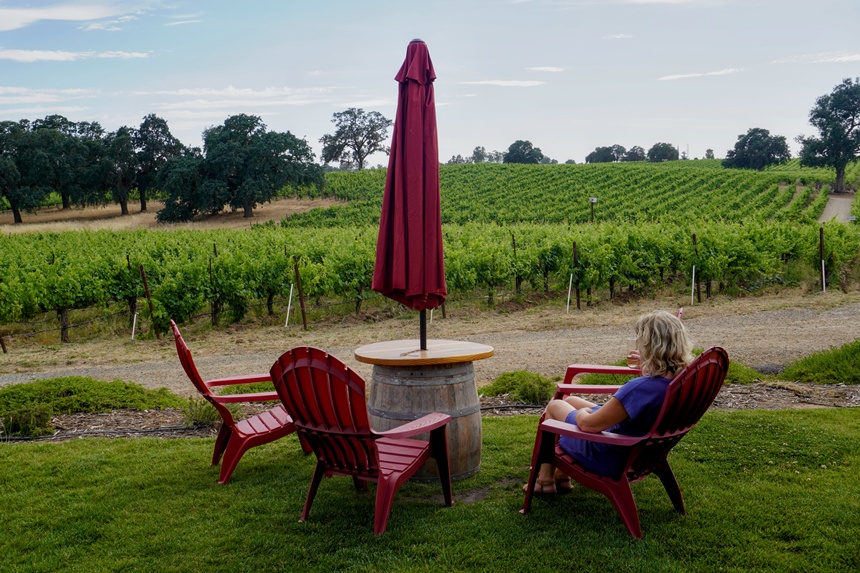
Become a Saturday Evening Post member and enjoy unlimited access. Subscribe now
